Happy memories of Christmas past
Christmas is a special time…even in what might now been described as poor or deprived childhoods.
But those of us who lived in those times never saw our lives as deprived. Christmas was a joy to behold and made families stronger, closer and happier. The period often defined our communities and increased the importance of families and friends.
In the “island” communities in and around the Royal Docks, traditions were established and very much remain today, according to those who still live or lived in the area.
It was a time when workers took a short break from their daily toil. Yet the very places they worked in played a massive part in creating the Christmas spirit. Local factories knew what it meant to give the children of struggling families a special treat.
Having spent the last month speaking to scores of people, the first thing they pointed out from the 50s, 60s and 70s, was the lack of anything to do with Christmas in the shops before December!
“Now it begins in September,” said Sukhdev Kullar, who still runs a store in Silvertown, where he has spent all of his life.
Laura Grainger said: “Harrods have their Christmas card delivery in July now, and the supermarkets start selling Christmas goods before summer is finished.” 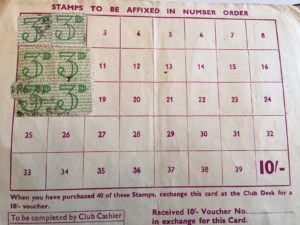
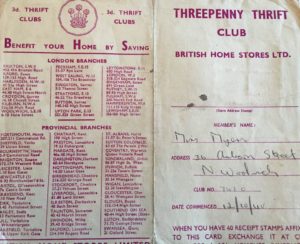
Friend Ron Kullar, who runs one of North Woolwich’s two remaining pubs, the Henley Arms, told the first of many amusing Christmas yarns, when he revealed how as a youngster the family became attached to Harry the chicken as their family pet over four months. Unfortunately, Harriet as she was re-Christened, ended up as Christmas dinner!
When preparations started, the creation of home-made decorations seemed to be a thing many remembered. As a seven-year-old Audrey Trott remembered: “Making paper chains for what seemed like days and getting the glue feeling on your tongue for ages as we made more and more of them. I can almost still taste it now.”
In later years, the decorations became bigger and brighter. Woolworths led the way with tinsel, cards and special decorations. Cuffs store across the River Thames in Woolwich was a big attraction, and they had a Father Christmas in store.
“The smallest of things were wrapped up and put in pillow case that was hung on the end of the bed while you were asleep on Christmas Eve,” said Terry Myers, now 75, who lived in North Woolwich. Oranges, apples, combs, there were any number of surprises to upwrap. Cox’s orange pippins, and nuts were a favourite. “And dates,” said Josie Webb. “They were hanging about in the house for what seemed like months.”
“And no matter what it took, we always had a real Christmas tree,” said John Grainger. “There were needles about for weeks afterwards as they were a bugger to hoover up, but that made it real. After Christmas we re-planted the tree in the garden in Rhea Street, North Woolwich, or at my nan’s in Auberon Street, hoping it would re-grow, but it never did.
Josie begged to differ. “Our always did, perhaps we had the golden touch! And trees ALWAYS had a fairy on top, said Josie.
Laura said candy cones hooked on the tree were her favourite tree decoration.
For many, it seems the happiest memories were from the 50s, 60s and 70s.
In the days leading up to the big one, children would have parties at their schools including Drew Road, Silvertown and Elizabeth Street or Storey Street in North Woolwich.
Those things have remained the same. Nativity plays, carol concerts, and a special school Christmas dinner, though many of them are now more multi-faith as the local community has changed.
Children so looked forward to the parties staged at local factories for the youngsters of workers. They realised how much it meant to families struggling to make ends meet. Among those in the Royal Docks area were at Tate & Lyle, Ranks, Standard Telephone and Cables, Loders and Nucoline, John Knights, Henleys and Printar Industries (PR Chemicals).There was no charge to workers.
Lorraine Stevens enjoyed the parties at Tate & Lyle, were her mum Joan worked. She recalled how she used to queue up for presents in the “older section” for kids at Tate’s parties. “The presents were much better!” she said. “If you pretended you were a year older you got a better gift.”
Stan Dyson went to the Tate & Lyle parties in the 50s “with my young sister Kathy and two brothers John and Roger.” He added: “Back in 1954 I ended up sitting next to and becoming friends with Canning Town child film star Jenny Jones.”
Stan said: “I loved Christmas so much. It was lovely going shopping with mum to Rathbone Street to see all the lights and the market traders were so friendly to everyone. I had favourite records at the time and would ask them to play music for me on the record stall and they did. Mum would buy a chicken on Christmas Eve as we could not afford a turkey.”
John Martin, now living in Noarlung Downs, South Australia, said: “We lived in tough times, but we always had the Tate & Lyle party to look forward to. One year I even got a Brylcreem dispenser and tub of Brylcreem!”
Angela Lewington said: “I always envied the Tate & Lyle kids. We went to the parties organised by Standard Telephones. My brother always seem to get a John Bull printing set!”
Seasonal trips to the panto were run by some firms. Valerie Wernham said: “I always used to go to the parties organised by Pinchin & Johnson, We were often taken to see panto as well.” Others told of trips to the circus in the run up to Christmas.
West Ham MP Lyn Brown said: “Christmas traditions in our family have changed over the years as we have lost and gained people. My mum worked at Tate’s and my dad at Aluminum Foils , so my sister and I went to parties at both firms.”
Brian Cook recalls how he got a “super speedboat” from Tate and Lyle’s party in the 60s.
Children were always smartly dressed at the factory parties. Many locals in the Royal Docks area worked at Ford’s plant in Dagenham,
“Ford always had decent presents. We looked forward to it. I had a smashing tennis racket one year,” recalled Lesley Quirk as a ten-year-old.
Workers were usually given a Christmas bonus to help cover the cost of providing a proper family Christmas.
With many fathers finishing work early on Christmas Eve, when Lesley grew up in the 60s and 70s, she remembers her father Tom’s routine,…the same most years!
“My dad Tom would go to The Ram pub in West Silvertown and come out merry and then he’d go to Rathbone Market shops near our home in Canning Town and buy my mum Grace some jewellery at the last minute and presents for my brother and I.”
But a lot of familes would have saved all year via the “Christmas Club”, like the ones run by George Miles, the butcher in North Woolwich or Wyatts the greengrocer.
“Many of the presents were bought from Woolworths in Barking Road, Canning Town, or Staddons at the Abbey Arms in Plaistow or in Rathbone Market, “ said Lesley.
People saved up all year round via Provident loan or or via other loan clubs, or even collected Green Shield stamps all year and then suddenly went out on a spending spree.
Many in North Woolwich and Silvertown walked through the pedestrian tunnel or caught the Woolwich Ferry to go to the bigger shops in Woolwich to buy the gifts or caught a bus to East Ham or Canning Town to buy gifts.
“There were no fridges in those days, just a larder,” remembered Sheila Grainger. Pam Wellman agreed: “We did the shopping every day going to the butchers and greengrocers to keep everything as fresh as possible.”
If the loan club had paid out enough, the money may have been used to buy a winter coat, said Pam. There might even have been a visit to London to Selfridges if the budget stretched that far.
Christmas was a time for looking smart. Keeping clean and smart meant an extra visit to the public baths, next to where the Henley Arms still stand. “Not many people had a bathroom like those made by a team of Bathroom Fitters London. There were men’s and ladies’ nights, and the women bathed with the children.
“The shout would often ring out “more hot water in number 6”. I remember the taps were very wide and water came gushing out. There was a big stick to disinfect the baths after, “ said Audrey.
There might also be some unexpected “unofficial” bonuses for families. Stories of dockers bringing home anything from meat to fruit they had smuggled out of the docks were legendary. The local cigarette factory Phillip Morris and Tate & Lyle also had employees take “more than a few items” home to help with the Christmas celebrations. Women would stuff the material inside their underwear and the men found novel ways of taking out contraband.
Lorraine said: “One year dad came from the docks and we thought he was going to die. His collar and shirt was covered in blood and he seemed distressed. It was only when he told us how he had smuggled meat wound around his neck that the full story emerged. We had steak as well that Christmas!”
Midnight mass was a tradition for many local families. David Conroy being an altar server on Christmas Eve.
On Christmas Eve – and even nowadays – carrots, a drop of brandy or whisky and a mince pie was left out for Father Christmas and his reindeer to come down the chimney and consume
Fireplaces in many homes were boarded up. Years later, decades of notes squeezed through the cracks to Santa, were found as the homes were redeveloped.
The pillow cases , or stockings for some children, hung on the end of the bed, were filled with all kinds of delights.
One local recalled: “At Christmas time, the ships would come in and you’d see little Christmas trees attached to the masts. Then when the New Year came in they would blow their whistles and toot their horns.”
Quite a few families spoke of the morning pilgrimage on either Christmas Day to “the grounds” – the cemeteries where loved ones who has passed away were laid to rest.
Present opening time generally seemed to be first thing in the morning, getting up as early as 6am. In our house, since the late 70s it has always been bacon sarnies and then present openting time. For some it was cornflakes or crumpets for Christmas Day brekkie.
As selection boxes were introduced in the late 60s many became a staple in the childrens’ pillowcases. In earlier years many boxes of sweets and choccy were made up by the women of the household, boxes of bon bons were a favourites.
Stan said: “Many gifts were simply things like fruit or nuts wrapped up. You would keep an eye open for a visitor in the night, dreaming it was Father Christmas, but secretly knowing it was your dad! But we were lucky enough to get toys as well.”
Yvonne Worthington, who lived in Upton Park for many years, recalled how her family used to wrap up almost anything – an apple, an orange – in Christmas paper to hang it from the tree to ensure everyone had something on Chriistmas Day.
Children happily played with the smallest of presents because it was to become a family day of celebration, big dinners, and evening games and parties.
Of course, many people still had to still work on Christmas Day. Audrey remembered how “auntie” Annie Sharpley worked in the toilets outside Royal Victoria Gardens on Christmas Day. There were about 20 pubs open in North Woolwich and Silvertown on Christmas Day in the 60s and 70s. The loos also remained open as there was a bus service on Christmas Day. One of the family was dispatched to take her Christmas lunch to her so she did not miss out. She had an office inside the toilets, where she ate her meal.
Lorraine’s father Jack Atkinson also used to work in the mens’ toilets for a while outside Royal Victoria Gardens, she recalled. “He still had to work on Christmas Day.”
And if you need a particular record for your evening party, you could travel to Sellmans Record Store in Plaistow as the people who ran it were Jewish and so opened on that day. A great boon for the evening parties!
The pub was a big feature of Christmas day. In some homes, entire families were off down the local pub. Again, it was time to put on your best, or newest, clothes. Children would have to sit outside. The women stay for a short time and leave two hours before the men to make the final preparations for the dinner.
But for most, the women stayed at home preparing the special dinner and the children played happily with their toys and helped. Christas Dinner time was after the pubs closed, usually at 2.30 or 3pm. My own memory is of my mother Lily letting me drink the apple juice left over from making an apple pie. Perhaps that’s where my taste for cider came from!
“It was a day to dress up nicely, hopefully in clothes you had bought especially for Christmas in the weeks before, “ said Sheila,
An important part of the dinner was cracker pulling with the novelties inside saved by children and often of excellent quality, said Audrey, and of course, the paper hats had to be worn.
The usual menu was Turkey and/or chicken, and pork, brussel sprouts (often over-cooked until they were mush), roast potatoes, home made Yorkshire puds, carrots, sage and onion stuffing, according to many.
Lesley said the Yorkshire pudding was made in one big dish in meat fat. “Mum used to make her own batter, there were no ready mixes then.They tasted delicious. This was the favourite part of dinner, with the roast potatoes.”
Bicarbonate of soda was used in cooking the green veg to keep their colour, something unheard of in today’s cooking. Giblet soup was also on the menu in some homes, said David Conroy.
Many of those interviewed said it was quite common for anyone found to be on their own in a pub on Christmas Day to be invited back for dinner, as the men became more benevolent with each beer (or brandy or whisky)!
The usual drinks beer and whisky or gin were drunk, but Yuletide favourites were a Snowball or Babycham. Newcastle brown ale, barley wine , port and lemon and sherry among them. Wine had “not been invented” for our communities back then, said Sheila.
“Later, in the 70s,” said Lesley,. Blue Nun wine and Liebfraumilch wedding veil, gave us our first real taste of wine at Christmas “making us feel quite sophisticated.”
In the 50s and 60s for dessert, it was Christmas pudding (often home made) , and the hunt for the lucky threepenny bit inside was always a highlight,” said Valerie Gutteridge, who lived in Albert Road. In later years, it became the hunt for the first person to find the silver sixpence inside, hopefully not cracking someone’s teeth when they took a bite.
Evening meals – teatime to us locals – were usually made up of Turkey in some form or another . “Cold meat and turkey sarnies, with picalli and mince pies, said Audrey, got ready while the men slept off the effects of their lunchtime drink.
Games for the children, dominoes, cards, charades were a big feature. It was party time at home in the evening. The pubs were closed.
Sometimes the home-made ouija board came out, with letters painted on a mirror in candle-wax. I used to sit in wonderment.
People remembered Christmas Day dramas with a humorous side.
Anne Bowden recalled: “One Christmas lunchtime, my dad came back a little worse for wear from the lunchtime drink. As he staggered in, my mum Joan, who was a fairly small lady, saw him about to fall over and hurt himself. We all thought she was trying to save him, but she just pushed him in a different direction so he did not damage the Christmas tree we had all spent so long preparing. Dad ended up a bit bloodied but we all had a laugh about it.”
Lorraine recalled: “One year when we were living in a prefab we heard noises outside, – the walls were thin- and we thought we were about to be robbed. We got brave enough to go outside and chase the person we saw, armed with shovels and spade. We chased him for what seemed like ages until we realised was our uncle David who had just come round to wish up a Merry Christmas!”
Terry said: “But the things I remember the most were the parties. Singing Knees-Up Mother Brown and all kinds of songs that remain with me today. My Auntie Ann, who lived with us, was a big lady and she danced and enjoyed herself so much. But she was so heavy she fell through the floorboards on one occasion!”
Playing a piano in the front room – sometimes this was only time in the year that the room got opened – was common if you had one. There was usually one person in the house who could plonk out a tune.
Stan recalled: “We played a variety of games. Hanging an apple on a string from the ceiling and trying to find it blindfolded to take a bite out of it was a favourite.” But Radio was king in the Dyson household.
Valerie said: “Those were tough days, but we never considered ourselves deprived. It was a tough upbringing but we all survived and for the most part we were very happy.”
There was no TV for most families until the 60s, it became every more popular in the 70s when Morecambe and Wise and Top of the Pops were among the highlights.
The radio playing Forces favourites would have been on earlier in the day.
In the 50s, 60s and even 70s it was time for the old Dansette record player, radiogram of gramophone. to come out and the 45s or 78s to be loaded up.
Tommy Steele, Billy Fury and the stars of the day would make every party one to remember.
Bubble and squeak was the favourite lunch with the left overs on Boxing Day, said Lesley, and still is today.
In some memories penned by Julia Myers, who passed away two years ago, she said that in the 40s: ”We spent some of pre-Christmas period under the Silvertown viaduct in a place where entertainment was being staged. We were fortunate to once have the German actor Conrad Veidt visit us.”
Locals always knew the festive period was coming to an end with the sound of all the ships in the Royal Docks blaring their horns to signal the arrival of a new year at midnight on New Year’s Eve.
Though the 12 days of Christmas weren’t finished, it signalled a new year, new hope and people were outside in the street banging their dustbin lids and carrying a traditional piece of coal over the threshold to mark a new year.
Picture credits: With thanks to Tate & Lyle Sugars Ltd, Brian Cook, Julia Myers, Stan Dyson and the Grainger family.
This feature can be found in two parts on the website of London’s Royal Docks. The series Forgotten Stories is on the londonsroyaldocks website, the online archive keeping the history alive of London’s Royal Docks and its commuites.
The link is below
http://www.londonsroyaldocks.com/forgotten-stories/


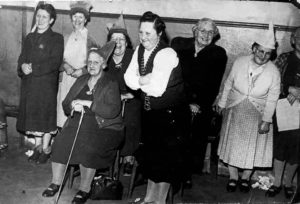
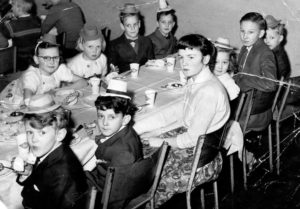
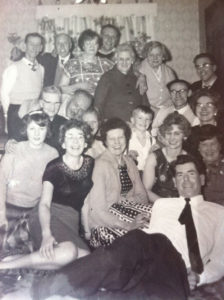
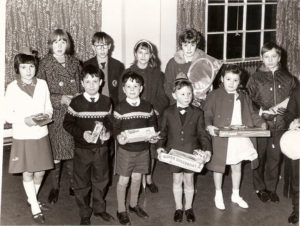
Thank you for sharing this.
How things have changed , I can’t believe how all the pubs like the three crowns the standard the pavilion were always packed , Now there’s just the Standard hanging on, I Just heard that Peter the wap (not PC I know) has passed away, I can still here him saying hello kid how are you and he would always give me my first drink on the house, RIP , I even forgive him for telling my dad I nicked a bottle of coke off the pub delivery truck and got a wack round the head.